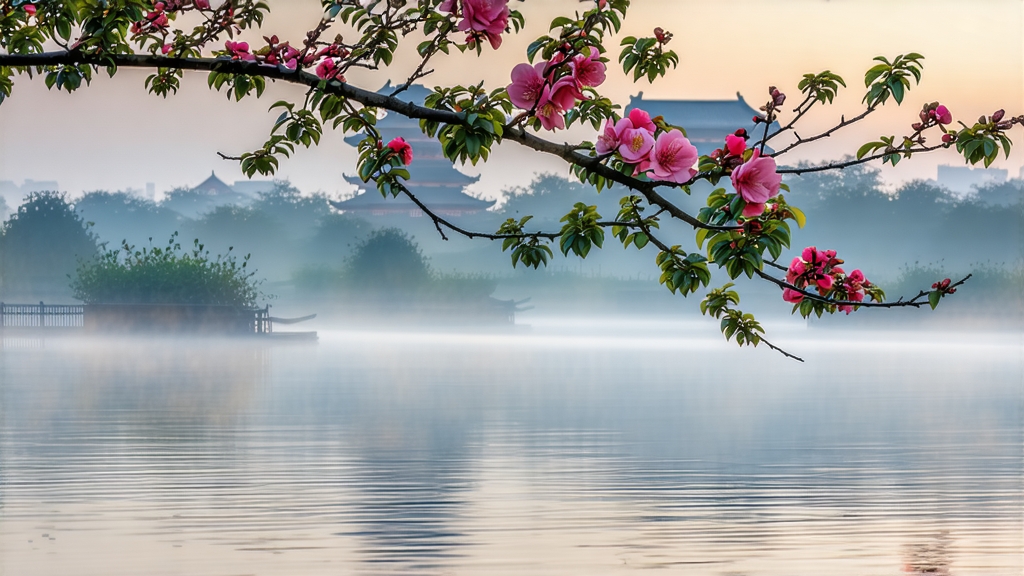
Biluochun, whose name translates literally to “Green Snail Spring,” is one of China’s ten most celebrated teas, yet it remains a delicate secret outside serious tea circles. Grown on the mist-locked islands and peninsulas of East China’s Taihu Lake, the tea is so tiny and tender that one kilogram can contain more than sixty thousand buds, each rolled into a tight spiral reminiscent of a sea snail. To international drinkers accustomed to the sword-shaped leaves of Longjing or the downy tips of Silver Needle, Biluochun offers a different visual grammar: an emerald coil that unfurls in hot water like a time-lapse fern.
The recorded history of Biluochun begins in the late Kangxi period of the Qing dynasty (around 1699). Local legend tells of a tea picker who, running out of space in her basket, tucked fresh leaves between her breasts. The warmth of her body prompted an accidental micro-fermentation, releasing an astonishing fragrance that attracted the attention of monks passing by. The emperor, visiting Suzhou’s Huqiu Temple the following spring, tasted the tea and renamed it from “Xia Sha Ren Xiang” (literally “scary fragrance”) to the more elegant “Biluochun,” referencing its snail-like shape and early-spring harvest. While romantic, the story underscores two truths that still define the tea: it is picked at the very first flush of spring, and its aroma is so intense that it was once thought almost supernatural.
Geographically, authentic Biluochun comes only from the Dongting Mountains—Dongting East and Dongting West—two limestone islands rising out of Taihu Lake in Jiangsu Province. The lake’s vast surface moderates temperature, creating nightly fogs that act like a silk curtain against UV rays. The result is a slow, tender growth rich in amino acids, especially L-theanine, which translates into the tea’s hallmark sweet-umami broth. Unlike the continental climate of Zhejiang’s Longjing villages, the lacustrine microclimate here is humid and slightly saline, giving Biluochun a faint marine note that connoisseurs liken to steamed edamame or fresh nori.
Within the narrow appellation, two cultivars dominate: the small-leaf “Dongting Qunti” (local population) and the newer “Fuding Dabaicha” graftings introduced in the 1980s. The former yields a more complex, orchid-like cup but only half the weight per bush; the latter is hardier and higher-yielding, yet can taste flat if over-fertilized. Premium lots are still picked from 100-year-old Qunti bushes rooted directly into granite crevices; these gnarled plants send their roots deep for minerals, producing buds no longer than one centimeter covered in white down.
The crafting of Biluochun is a race against time and oxidation. Picking begins around Qingming (early April) when each bud is still closed and accompanied by an embryonic leaf—what locals call “one bud just showing its tongue.” Workers start at 5 a.m. so that leaves enter the workshop before 9 a.m., preventing the midday rise in enzymatic activity. Once delivered, the buds are spread on bamboo trays and “wei diao” (soft-withered) for two hours in a drafty loft; this step reduces grassy notes without the bruising that would later blacken the leaf.
Next comes the most iconic step: hand pan-firing in a wok kept at 180 °C. A master maker, almost always a woman because smaller hands allow subtler wrist motion, tosses 250 grams of leaves in rhythmic arcs lasting three to four minutes. The goal is to “kill green” (enzymes) while preserving moisture in the core of the bud. Fingers must read the leaf’s tactile shift from velvety to leathery; one second too long and the down burns, lending a bitter popcorn note. Immediately after killing green, the same wok is cooled to 70 °C and the rolling phase begins. Using a spiral hand motion that mimics the Chinese character “回,” the maker coaxes each bud into its signature snail shape while simultaneously drying it to 30 % moisture. The entire cycle—kill green, roll, and final low-temperature drying—takes 35 minutes, after which the leaf weight has dropped by 68 %.
Because the finished tea is so small and delicate, Western teaspoon measurements are unreliable. The classic Suzhou household method is to “float three layers of snow